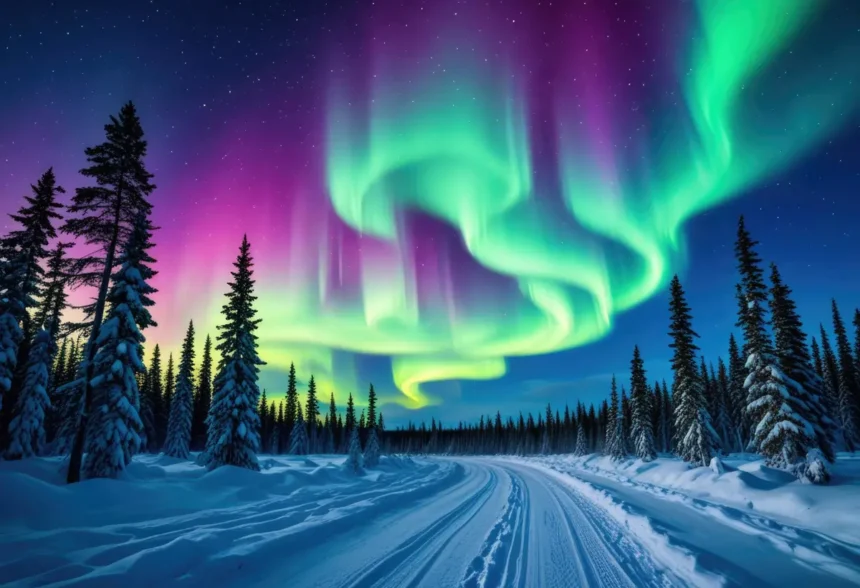Introduction
Witnessing the Northern Lights is a magical experience that tops many travelers’ bucket lists. The vibrant, dancing lights of the aurora illuminate the night sky, offering an unforgettable spectacle.
This article will explore the best places to see the Northern Lights, guiding you to prime locations to witness this natural wonder in its full glory. From Norway’s icy landscapes to Canada’s remote wilderness, these destinations offer the perfect conditions for viewing the aurora. Whether you’re planning a trip to Iceland’s volcanic terrain or the serene expanses of Finland, our comprehensive guidance will ensure you find the best places to see the Northern Lights.
Read also: Land of Contradiction – Why is Iceland volcanically so active?
Discover the science behind the aurora, the optimal times for viewing, and tips for making your Northern Lights adventure a success. Join us as we uncover the most breathtaking spots to experience the Northern Lights.
Understanding the Northern Lights
What are the Northern Lights?
Aurora Borealis, also known as the Northern Lights, is one of the most scenic views during the night. The Northern Lights are a natural light display predominantly seen in high-latitude regions, particularly near the Arctic Circle. They occur when charged particles from the sun, primarily electrons and protons, collide with gases in Earth’s upper atmosphere. These collisions excite the gas molecules, causing them to release energy in the form of light.
How are the Northern Lights Formed?
Activities on the surface of the Sun cause the lights that we particularly see in the night sky. Solar stroma on the star’s surface radiates huge clouds of “electrically charged particles. These particles can go to a long extent; in the end, some may strike the Earth. Most of the particles are moved far away, but some may become trapped in the earth’s magnetic system, moving fast toward the north and south poles in the atmosphere.

This is why aurora borealis is concerted for the same reason. The lights that we see in the sky are the atoms and molecules in our atmosphere that collide with the particles from the sun. An aurora’s downward part is around 80 miles on the upper part of the Earth’s surface. But the top exhibition may add several thousand miles above the Earth.
Read also: 7 Mind-Blowing Facts About Solar Atmospheres You Didn’t Know
Color & Pattern of Auroras
The colors of the Northern Lights depend on the type of gas molecules being excited. Oxygen molecules typically produce green and red light, while nitrogen molecules produce blue and purple light. The intensity and patterns of the lights vary depending on the solar wind’s strength and the interaction with Earth’s magnetic field. The Northern Lights take on various forms, ranging from shimmering curtains and arcs to flickering rays and swirling spirals. Their movements are often described as “dancing” across the sky, adding to their mystical allure.
Types of Auroras
The aurora can be seen closer to the poles of both the northern and southern hemispheres. In the north, it is considered the aurora borealis; in the south part, it is known as the aurora australis. The northern and southern lights have always offered a fascinating view for humans for centuries.
Read also: Surviving the Next Solar Storm: 5 Essential Facts You Need to Know
Best Times to See the Northern Lights
The northern light may become visible for longer and shorter periods, lasting only a few minutes, so the best thing to do is wait. The most preferable time is throughout winter, but anytime between September and late March is a good time for the northern lights.
Seasonality: The Darker, the Better
The Northern Lights, or Aurora Borealis, are most visible during the darker months of the year. Late autumn, winter, and early spring (September through March) offer the longest periods of darkness, creating an ideal canvas for the aurora to paint the sky. The extended nights in high-latitude regions increase your opportunity to glimpse this elusive phenomenon.
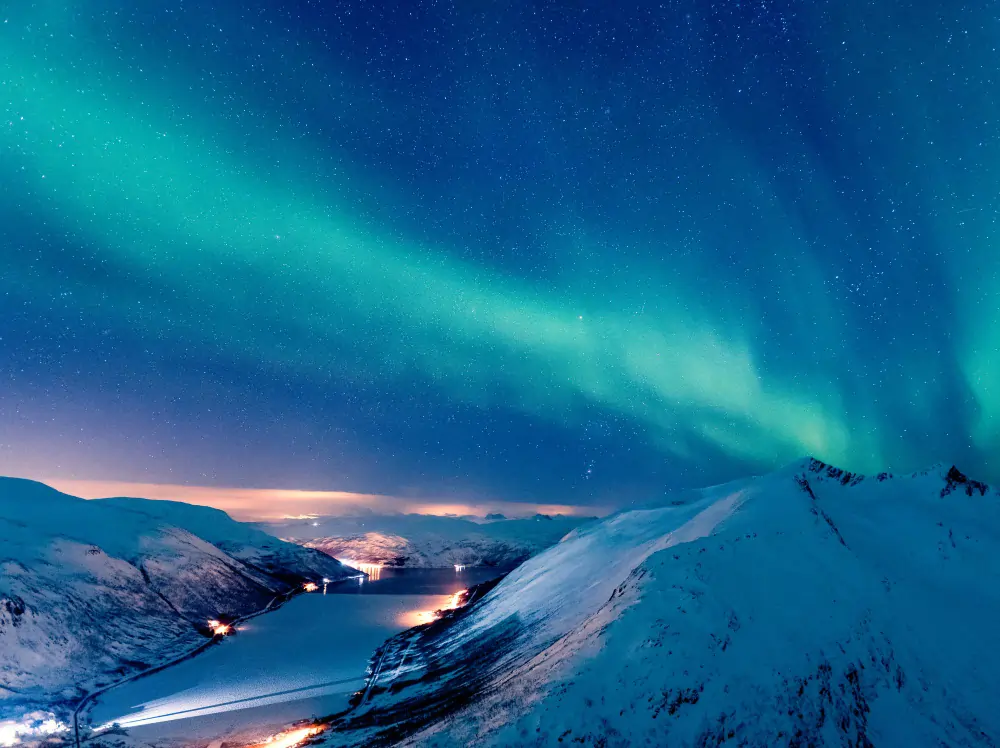
Time of Day: Nighttime is the Right Time
While the Northern Lights can occur at any time, they are most commonly seen during the late evening and early morning hours, typically between 10 PM and 2 AM. This is when the sky is darkest, allowing the vibrant colors of the aurora to shine truly. However, it’s important to remember that the Northern Lights are a natural phenomenon and can appear unexpectedly, so be prepared to stay up late!
Solar Activity and Forecasts
The intensity and visibility of the Northern Lights are directly linked to solar activity. Powerful solar flares and coronal mass ejections from the sun send charged particles toward Earth, interacting with our atmosphere to create the aurora. Checking aurora forecasts and monitoring solar activity levels can significantly increase your chances of witnessing a spectacular display. Numerous online resources and apps provide real-time updates and predictions, helping you plan your Northern Lights adventure with confidence.
Read also: Solar Storm in Space | Reasons, Measurement, Effects and the Last Solar Storm Hit
Top Destinations to See the Northern Lights
You must be in the right place at the right time to witness this mind-blowing phenomenon. Let’s explore the prime destinations for witnessing this natural wonder within the well-known “Aurora Oval” and beyond.
1. Norway
The northern part of Norway is where you can visit to see the lights of the north. Tromso is considered one of the world’s most preferred places to view the Northern Lights. If one is in Norway for 4-5 days during winter, one can have a good chance to see the light. It can be seen from the Fjelheien Mountain, on the roof of Tromso, that the thrilling views of the northern light could be enjoyed; it’s just that the viewing platforms need to be the perfect spot.
Another spot, Svalbard, is between mainland Norway and the North Pole; this archipelago is also considered the best place to see the northern lights.
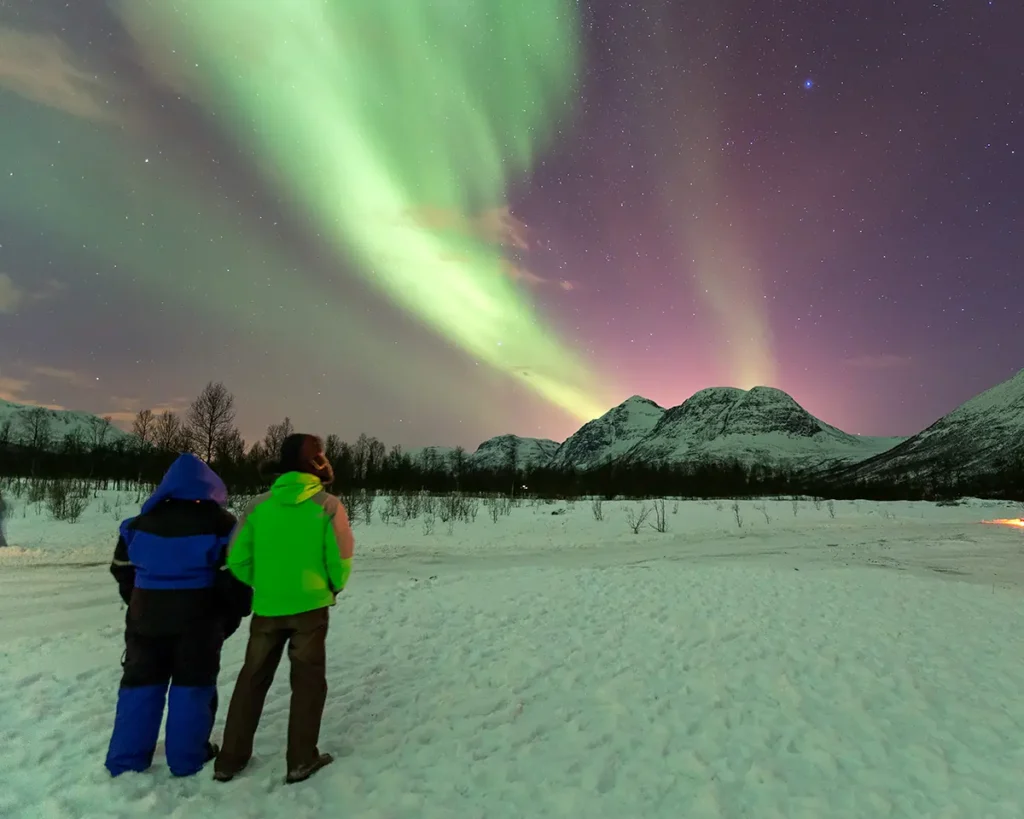
Bodo, located quite close to Ronvikfjellit mountain, is a sublime position for finding an open scene of the sky and amazing viewing spots.
2. Iceland
The west fjords and north islands have extended hours of darkness. They are especially less clouded than other places, making them favorable for viewing the aurora borealis.
The only exception is Akureyri because it is the second-largest city in Iceland. Even though it is possible to see the lights, the pollution makes it impossible to see the northern lights.
Read also: Discover the Magical Glacial Lagoon of Iceland: 7 Reasons You Must Visit
Many remote locations are in southern Iceland, which offers great opportunities to see the northern lights. The best place to see the lights of the north in Iceland is the Jokursarlon glacier lagoon, situated by the Vatnajokull glacier; the black sand beaches of south Iceland are also recognized as great places to see the northern lights.
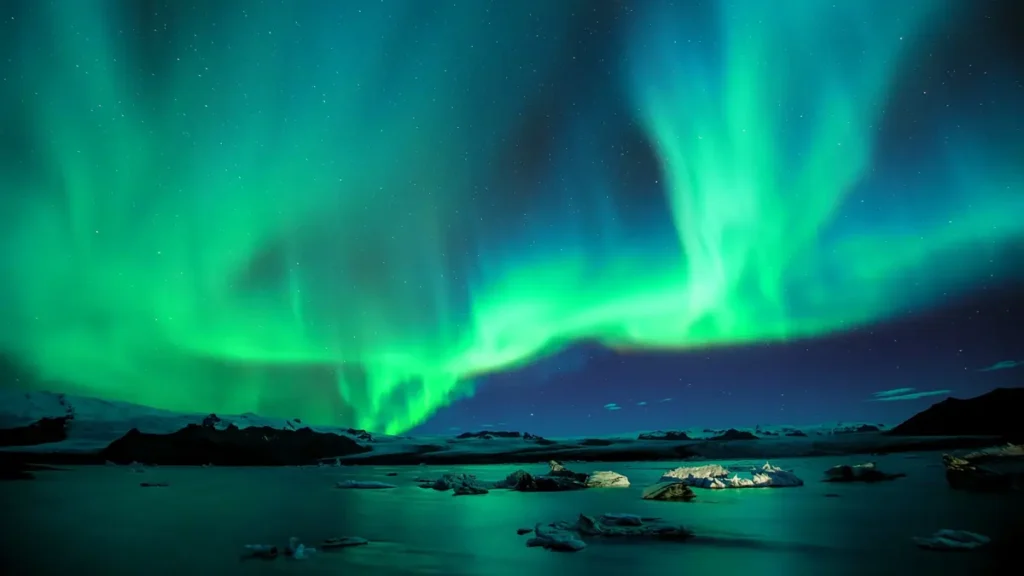
Other ideal places to watch natural lights include Thingvellir National Park in the south, Asbyrgi Canyon in the north, and Kirkjufell Mountain in the south.
3. Finland
The ideal places to see the Northern Lights in Finland include Kemi, Rovaniemi, Muonio, Ivalo, Kakslauttanenn, Levi, and Saariselka. Although it is guaranteed to see the Northern Lights from any direction, tours with accommodation in the Aurora Village Glass Cabins can increase the chances of watching them.
The northern lights in Finland can be seen during autumn and spring, and to see the lights of the north in Finland, the ambiance has to be dark and cold.
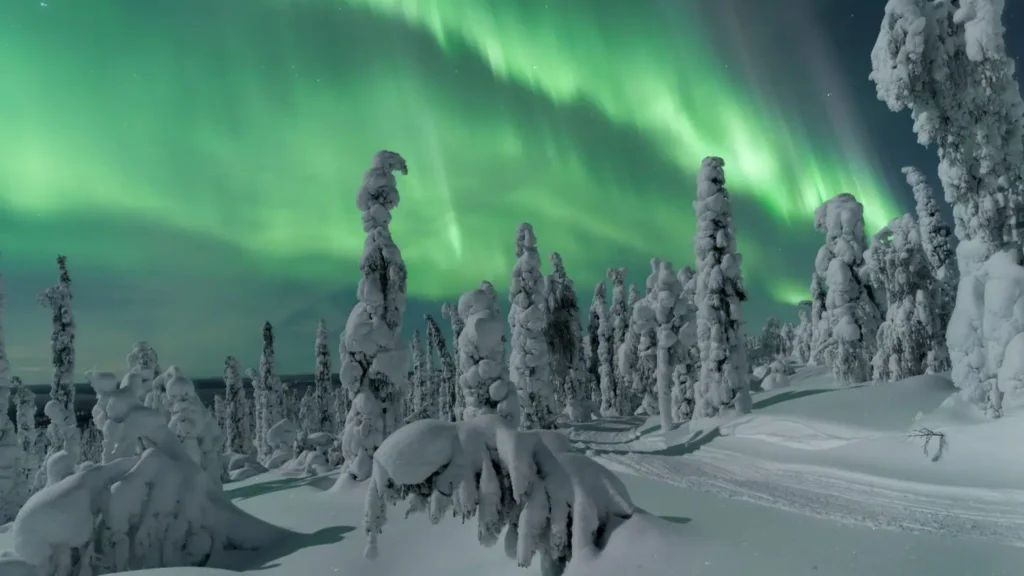
4. Sweden
Abisko National Park
To gain the best opportunity to visit the Aurora sky station in the Northern Lights. A chairlift takes visitors to the observation tower, the station’s Northern Lights exhibition, and the cafe. It is 100 kilometers west of Kiruna and can be accessed through daily shuttles and transfers. Abisko is known for its clear skies.
Kiruna
the country’s northernmost city has a population of around 22000. It is an ideal place to discover the great white north of Sweden. From Kiruna, the aurora borealis can be seen by car tours, snowshoes, snowmobiles, and dog sledding, and it is considered a perfect package.
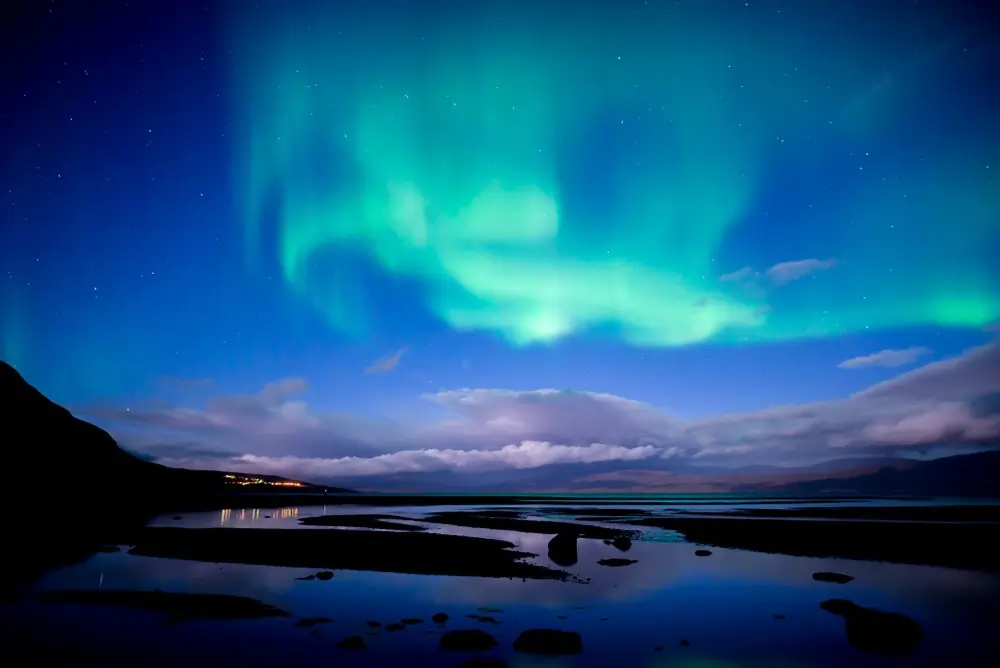
Porjus
Another northern village in Sweden is Porjus, which normally has 400 inhabitants. This is a coveted position in Sweden’s northern lights observation. A cabin can be rented to enjoy the view.
5. Canada
Northern lights can be seen anywhere in Canada in all four seasons. But the north is the best place to view them. The best venues are free of pollution and remote. In British Columbia, crystal clear clouds can be seen, and then head north; after that, winter is the best season to see the light.
Read also: Cultural Differences Between Canada and the USA: 5 Unexpected Contrasts
In Manitoba, located in the subarctic circle bordering Hudson Bay, Churchill can be found, especially in late winter, February, and March. These months are extremely cold and can drop to around -400C. September to November is the second best time to see the northern lights.
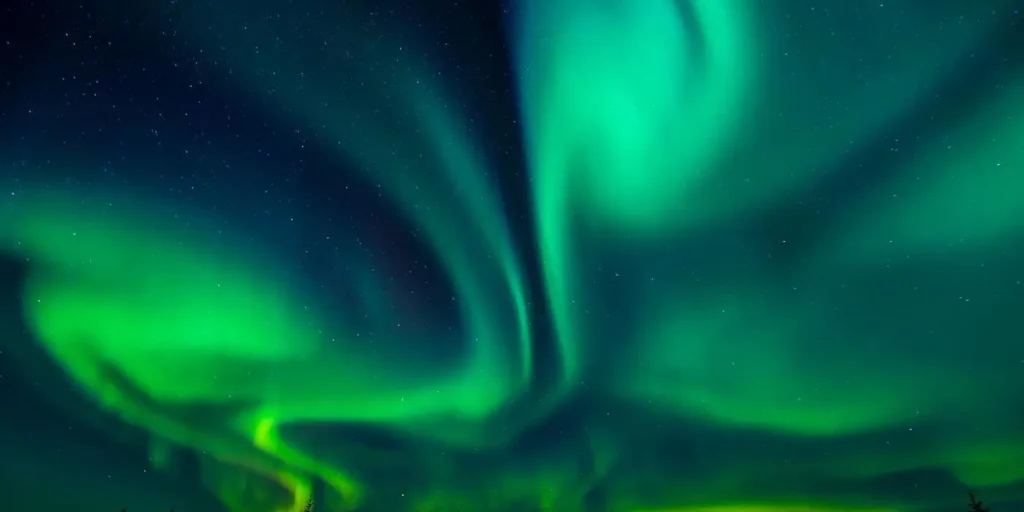
Yukon is another good place to see northern lights; autumn is the best weather to see the lights. Camping activities are also provided.
Northern Talkies hosts different Aurora package tours, including snowshoeing, ice fishing, snowmobiling, and mushing dogs.
6. Alaska, USA
Alaska Fair Bank is one of the best places to see the northern lights because of its position, long hours of dark skies, and many tours.
Read also: Top 10 Tallest Mountains of North America: Don’t Miss These Gigantic Peaks
Other locations that are preferable for seeing the northern lights include Coldfoot, Wiseman, Barrow, and Dead Horse. Northern light tours are also available in the interior Arctic and southcentral places. But the best thing to do is to see the lights of the north slide Statewide aurora forecast and Fair Banks aurora tracker.

Tips for Viewing the Northern Lights
- Going to the wards, the magnetic poles will be ideal for seeing the northern lights. The north magnetic pole is 400 km from the geographic pole, specifically in northern Canada.
- It is preferred to go out at night and go away from the city lights to see the northern lights, as the aurora cannot be seen at its peak brightness.
- The best time to glimpse the aurora is midnight, between 10 PM and 2 AM. The active aurora can extend until the morning. Aurora might be in the evening or the morning, but it is less active than midnight.
Read also: How are Glaciers Formed? A 4-Step Ultimate Guide
Planning Your Northern Lights Trip
Six things to remember when viewing the Aurora Tri in September and April. The winter months are the best time to view the northern lights.
- Selecting the right place or proper country is essential to view the northern lights.
- Getting ready to see different colors of the northern lights, for instance, from a particular place, they might be seen as green; they can also be blue, violet, or even grey.
- Checking weather forecasts is essential; for instance, if the sky is clear and stars can be seen, a huge change in infection affects the view of the northern lights.
- The best decision is to visit the Plaxe in winter to see the northern lights or aurora.
Read also: 10 Landmarks That Should Be Considered Wonders of the World
Conclusion
In conclusion, witnessing the Northern Lights is an awe-inspiring experience every nature enthusiast should seek. This article has guided you through the best places to see the Northern Lights, from the stunning landscapes of Norway and Iceland to the remote wilderness of Canada and Alaska. These destinations offer the perfect conditions to witness the mesmerizing dance of the aurora.
By understanding the optimal times and locations for viewing, you can maximize your chances of experiencing this natural wonder. Whether you are a frequent visitor or not on your first trip to see the Northern Lights, these guidelines provide all the essential information to make your journey memorable. Embrace the magic of the aurora and plan your next adventure to one of the best places to see the Northern Lights.
FAQs
1. What are the best times of the year to see the Northern Lights?
The best time to see the Northern Lights, or Aurora Borealis, is during the winter months, from late September to early April. The long nights and clear skies during this period provide optimal viewing conditions. The peak viewing times are typically between 10 PM and 2 AM when the aurora activity is most intense.
2. Which countries offer the best viewing experiences for the Northern Lights?
Several countries offer exceptional viewing experiences for the Northern Lights. Top destinations include Norway, Iceland, Finland, Sweden, Canada, and Alaska (USA). Each location provides unique landscapes and optimal conditions for witnessing the aurora, with guided tours and specialized accommodations enhancing the experience.
3. How can I increase my chances of seeing the Northern Lights?
Plan your trip during the peak viewing season (winter) to increase your chances of seeing the Northern Lights. Choose locations with minimal light pollution and clear skies. Monitoring aurora forecasts and being flexible with your travel plans can also help. Joining guided tours with experienced guides can significantly enhance your chances, as they know the best spots and times for viewing.
4. Are there specific places in Norway that are best for viewing the Northern Lights?
Yes, Norway offers several prime locations for viewing the Northern Lights. Tromsø, known as the “Gateway to the Arctic,” is one of the best places. Other excellent spots include the Lofoten Islands, Svalbard, and the city of Alta. These locations provide stunning natural settings and high probabilities of aurora sightings.
5. What should I pack for a Northern Lights viewing trip?
Pack warm, layered clothing for a Northern Lights viewing trip, as temperatures can be extremely cold. Essentials include thermal underwear, insulated jackets, hats, gloves, and sturdy boots. Don’t forget a good quality camera with a tripod for capturing the aurora. Also, bring a headlamp with a red light to avoid disrupting your night vision while exploring.
6. Can I see the Northern Lights from the comfort of a hotel or lodge?
Several hotels and lodges in Northern Lights hotspots offer aurora viewing directly from the property. Some accommodations in places like Norway, Iceland, and Finland are specifically designed for this purpose, featuring large windows, glass igloos, or outdoor hot tubs where guests can comfortably watch the aurora. These lodges often provide aurora wake-up calls to ensure you don’t miss the spectacle.


